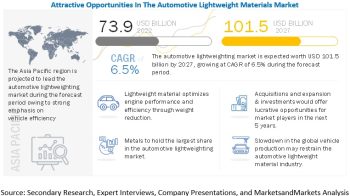
The global meal replacement market is estimated to be valued at USD 11.9 billion in 2021 and is projected to reach USD 15.5 billion by 2026, recording a CAGR of 5.4% during the forecast period in terms of value. The demand for meal replacement products is attributed to the increasing prevalence of obesity and diabetes, coupled with the increasing population of health-conscious consumers, changing consumer lifestyles, and the availability of convenient, nutritious meals in the form of meal replacement.

The emergence of plant-based and vegan meal replacement products
Meal replacements made from vegan ingredients are stocked with plant protein, fiber, good fats, and vital vitamins and minerals. A new breed of fluid meals called vegan meal replacements can perfectly substitute regular food. Some meal replacements come in single-serving bottles that are ready-to-eat (drink), making them a fantastic alternative for food on-the-go, while others are available as a powder that can be combined with milk or water to produce a shake. They are delicious and nutrient-dense. Specifically designed for patients and athletes, the US-based Vejii Holdings launched a plant-based meal replacement called Heal in 2021 that includes plant-based protein, powdered fruits and vegetables, anti-inflammatory superfood extracts, probiotics, and prebiotics.
Download PDF Brochure: https://www.marketsandmarkets.com/pdfdownloadNew.asp?id=740
Misinterpretation of protein shakes for meal replacement shakes
Consumers are often perplexed by the concepts of protein shakes, and meal replacement shakes and considers them synonymous. It acts as a challenge in the growth of the meal replacement market. Protein shakes are beverages that have protein as the primary ingredient. It could be whey protein, plant-based protein made from hemp, peas, rice, soy, or a combination of grains, or it could be both. They often contain fewer other macronutrients and lower fat and carbohydrate levels. Protein shakes are designed to fulfill only the body’s protein requirements and are usually consumed after an intense workout. Contrarily, a meal replacement shake is a beverage that includes vitamins, minerals, carbohydrates, fats, and protein. They can be used to substitute a whole meal for breakfast, lunch, or dinner and have the potential to meet all the nutritional requirements. They also aid in weight loss, wound healing, and recovery from illnesses.
The powder segment is the largest market for meal replacement globally.
Powders are consumed in the form of shakes with the addition of water or low-calorie milk. The rapid adoption of meal replacement powder as a part of weight management will drive the market for meal replacements products. Meal replacement powder is mixed with water or milk of choice (low-calorie, plant-based, low-fat, toned milk, flavored milk, among others) for consumption. These are available in various flavors, the most popular being chocolate, vanilla, and strawberry. Various companies are into the manufacturing of powder form meal replacement products such as Nestle and Huel. Nestle offers meal replacement chocolate cacao powder and has presence in various regions such as Middle East, Africa, North America, Asia Pacific and Europe.
Make an Inquiry: https://www.marketsandmarkets.com/Enquiry_Before_BuyingNew.asp?id=740
North America dominated the meal replacement market and is projected to grow with a CAGR of 4.6% during the forecast period (2021–2026)
North America accounted for the largest market share and is expected to grow at a CAGR of 4.6% during the forecast period. The CDC suggests that chronic diseases, such as diabetes, cancer, heart disease, and stroke, affect six out of ten Americans. Chronic illnesses are the main contributors to health care costs as well as the major causes of death and disability in the United States.
Dietary Guidelines for Americans (Dietary Guidelines), provided by the US health department, offer recommendations to satisfy nutrient requirements, advance health and fend off diseases The Dietary Guidelines are updated and published every five years by the US Departments of Health and Human Services (HHS) and Agriculture (USDA). The presence of health policies focusing on healthy eating and improved lifestyle choices, together with the willingness of consumers to spend on meal replacement products, contribute to the larger share of the US.
Top Companies in the Meal Replacement Market
Key players in this market include Abbott Laboratories (US), Glanbia (Ireland), Amway (US), Herbalife Nutrition (US), Nestle (Switzerland), Atkins (US), Huel (UK), Kellogg Co. (US), Skin Enterprises Inc. (US) and USANA Health Sciences Inc. (US).
Abbott Laboratories is an American multinational company that specializes in various fields such as nutrition, medical devices, diagnostics, and pharmaceuticals. It has over 99,000 employees and is spread across 150 countries, advancing global health. Abbott has a variety of brands through which it innovates products. Some of the brands include Ensure, Vital, and Glucerna, among others. The company has its global presence in Asia Pacific, Europe, the Middle East, South Africa, North America, and South America.
Amway is a multilevel marketing company that specializes in the manufacturing of beauty, health, and home care products. It is a global community that has a presence in over 100 countries. The company is primarily focused on manufacturing macronutrient supplements that can be used as meal replacement products. It offers products worldwide through its brands, such as Nutrilite, Artistry, Attitude, XS, and Amway Queen, among others. The types of products offered by the company include BodyKey by Nutrilite Meal Replacement Shake Mix.
Schedule a call with our analysts to discuss your business needs: https://www.marketsandmarkets.com/speaktoanalystNew.asp?id=740

